| “NASA Mike” Comberiati, Goddard Space Flight Center ; Andrew (Andy) Hoffmaster ; Lora Koenig, NASA ; Hans-Peter Marshal, Boise State University in Idaho ; and Teams , working on GROVER - [G]oddard [R]emotely [O]perated [V]ehicle for [E]xploration and [R]esearch, in a nutshell, is a solar-and-wind-powered, caterpillar-tracked rover that carries a ground-penetrating radar device. |
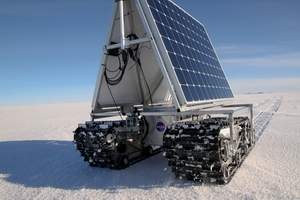
Grover prototype at Goddard Space Flight Center. Solar
panels on each side. Tracked base. - Click to Enlarge |
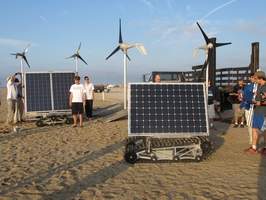
View from the front, The batteries and equipment
are located low in the structure. - Click to Enlarge |
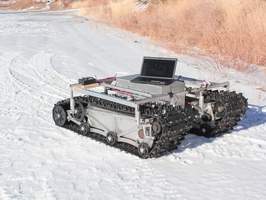
Look through the structure to see Astrobaut lurking
behind the trash can. - Click to Enlarge |
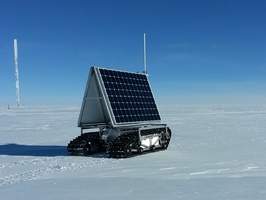
Grover prototype at Goddard Space Flight Center. Solar
panels on each side. Tracked base. - Click to Enlarge |
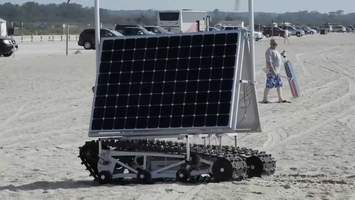
View from the front, The batteries and equipment
are located low in the structure. - Click to Enlarge |
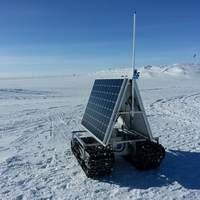
Look through the structure to see Astrobaut lurking
behind the trash can. - Click to Enlarge |
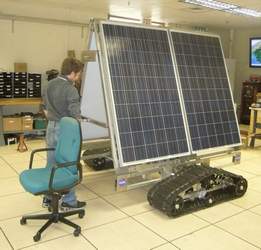
Grover prototype at Goddard Space Flight Center. Solar
panels on each side. Tracked base. - Click to Enlarge |
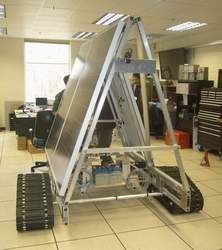
View from the front, The batteries and equipment
are located low in the structure. - Click to Enlarge |
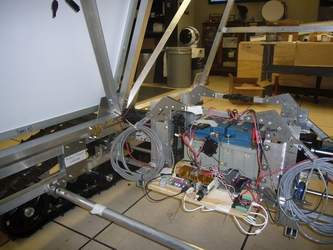
Look through the structure to see Astrobaut lurking
behind the trash can. - Click to Enlarge |
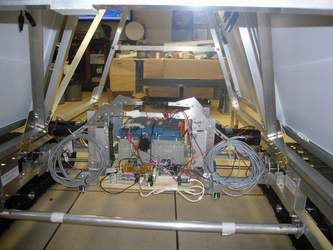
In the lab, here is the prototype electronics. Note the dual
batteries, and the bare pc. The drive motors are the black
cylinders at either side. Encoders were used on each
side to track travel. - Click to Enlarge |
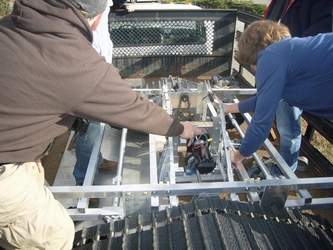
Students working on the mechanicals. In use, waste heat from
the computer was used to keep the batteries warm.
Click to Enlarge |
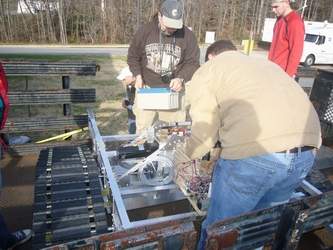
Battery install. The tracks are wide, to operate on snow.
Click to Enlarge |
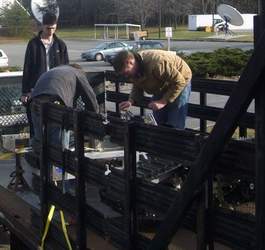
Putting the unit on one of Goddard’s trucks
for field trials. - Click to Enlarge |
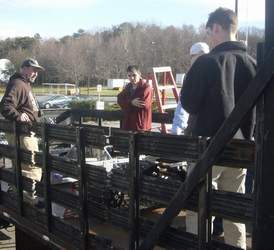
Luckily we had a loading dock.
Click to Enlarge |
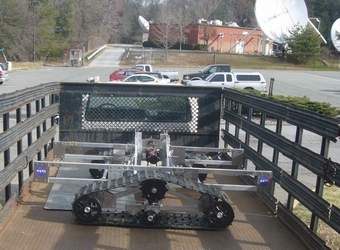
Well, it fit. The structure was aluminum.
Click to Enlarge |
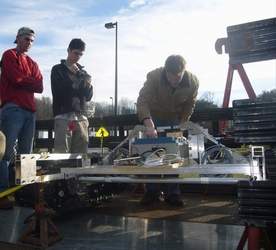
Adjustments. Notice the car battery which is a
sealed gell-cell unit. - Click to Enlarge |
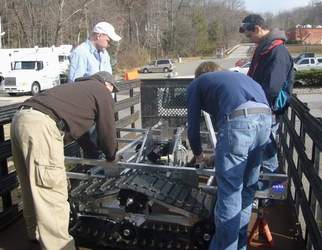
Make sure it is fastened down.
Click to Enlarge |
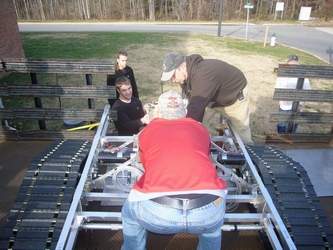
More mechanicals to deal with before the trip.
Click to Enlarge |
| “NASA Mike” Comberiati, Goddard Space Flight Center ; Andrew (Andy) Hoffmaster ; Lora Koenig, NASA ; Hans-Peter Marshal, Boise State University in Idaho.
. . . . . Andrew (Andy) Hoffmaster is one of the dozens of interns working this summer in the Engineering Boot Camp at NASA’s Goddard Space Flight Center. He recently graduated from the Catholic University of America in Washington, D.C., with a degree in biomedical engineering. It’s Hoffmaster’s third year in Engineering Boot Camp. This year he has stepped up to a leadership role, supervising five different teams of interns who are working on a science robot called Grover.
In a time-honored NASA tradition, “GROVER” is a very impressive-sounding acronym: Goddard Remotely Operated Vehicle for Exploration and Research. Hoffmaster started working on GROVER in 2010. He built the housing for the rover’s electronics. In January 2011, he accompanied Comberiati to McMurdo Station in Antarctica to help install and configure equipment to communicate with NOAA POES satellites.
GROVER - [G]oddard [R]emotely [O]perated [V]ehicle for [E]xploration and [R]esearch, in a nutshell, is a solar-and-wind-powered, caterpillar-tracked rover that carries a ground-penetrating radar device. It is designed to roam alone for months at a time measuring the thickness of the Central Greenland Ice Sheet, which is about the size of Texas. “The problem with sending people is that they run out of food and fuel too fast,” explains “NASA Mike” Comberiati, who runs the internship. Someday, GROVER will crawl across frigid Greenland at up to 3 mph, 10 hours per day, for 4 months. NASA Mike and his interns are working with NASA cryosphere researchers Lora Koenig and Hans-Peter Marshall on the project. (Koenig is based at Goddard; Marshall is at Boise State University in Idaho.
GROVER 1 weighs about 700 pounds. Its solar panels and wind turbines, the spinning blades produce power when it’s cloudy, and provide ample power. It has performed admirably in testing. But GROVER 1 is too heavy and too big, and it takes too long and too much work to unload and assemble. This summer, the interns assigned to build a better GROVER. Last year’s crop of interns completed construction of GROVER 1, which today sits on the front lawn of Building 25 in Goddard’s wooded east Campus. The rover will serve this year as a test bed for some of GROVER 2’s new systems.
Courtesy of Moderator Patrick H. Stakem a Senior Systems Engineer supporting NASA's Goddard Space Flight Center.
All pictures, information and notes are not those of NASA or Goddard Space Flight Center. No affiliation or endorsement has been made or taken and Infringement is not intended. Contents will be removed if in violation. Please contact me / us if you want to add information (names, pictures etc.), find any errors, or wish information or pictures removed. We strive for accuracy and will make any changes that is necessary. |

Source: Patrick H. Stakem - Updated 01-14-2015
|